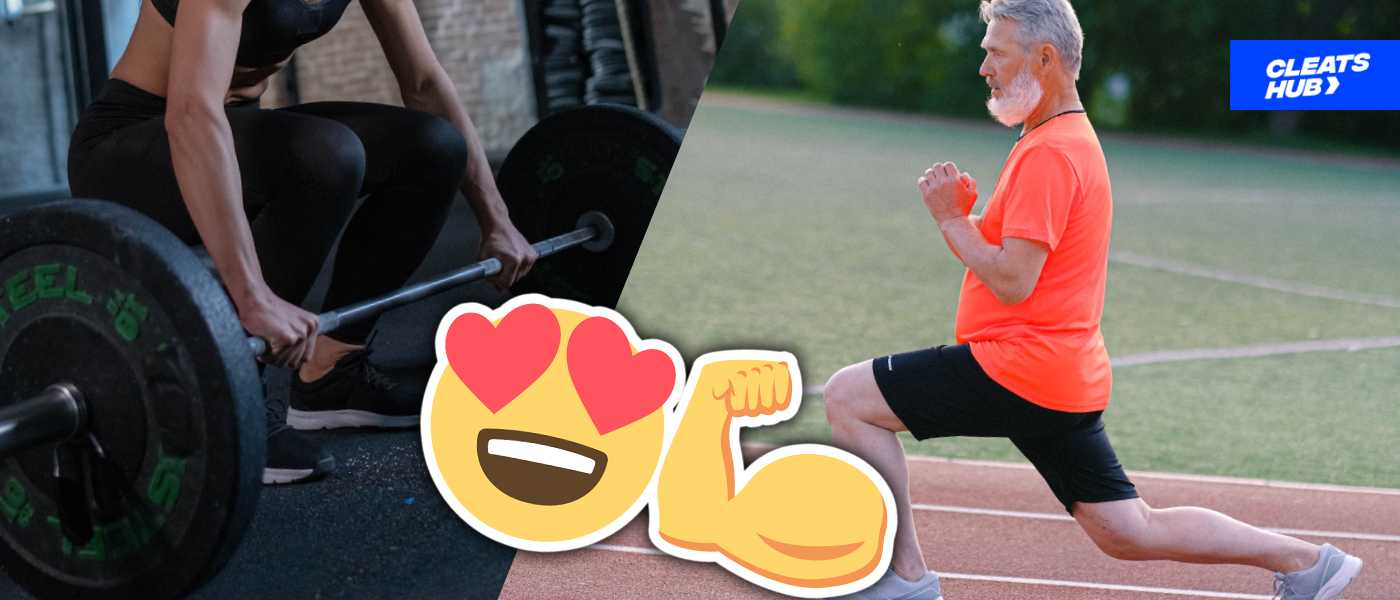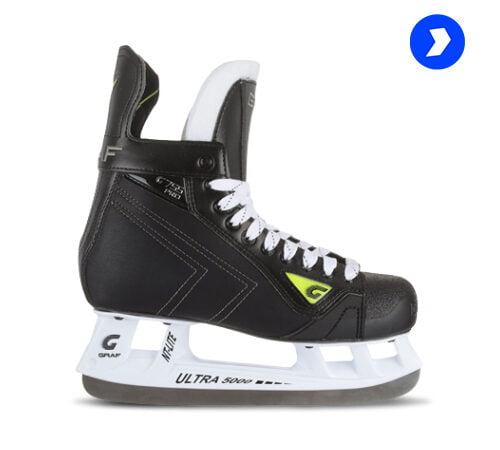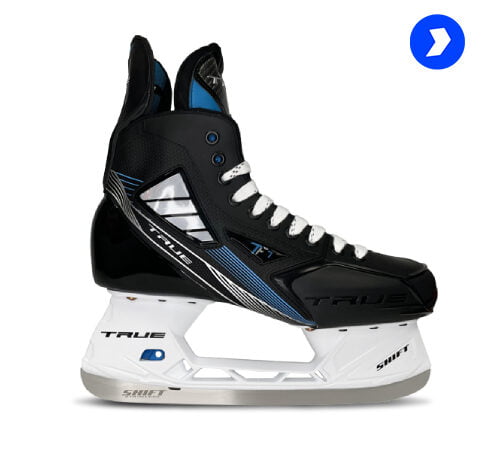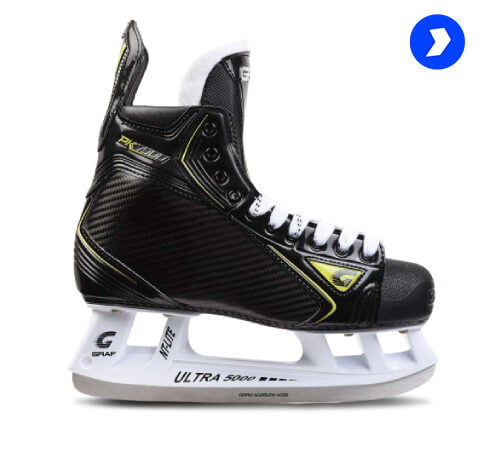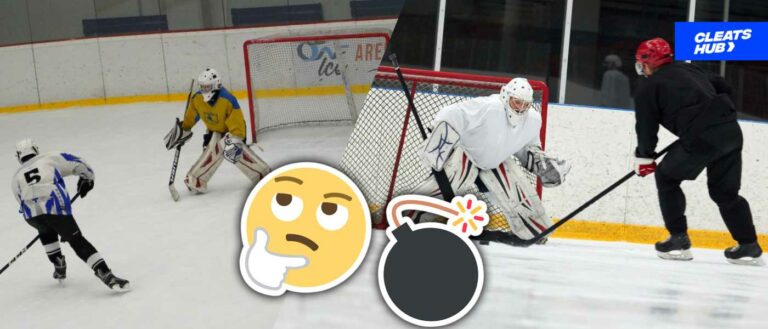Best Lower-Body Workouts For Ice Hockey Players
Lower-body workouts are a crucial part of an ice hockey player’s exercise programme because ice hockey requires lots of development in the lower body and legs for skating, stamina, sprinting and other on-ice activities.
In other to get your legs, thighs, glutes, hamstrings and other muscles to their peak physical condition, five categories of workouts are available for you below. Go through each exercise, make it a daily routine, and you will see improvement in your overall lower body strength and physical shape.
1. Lunges
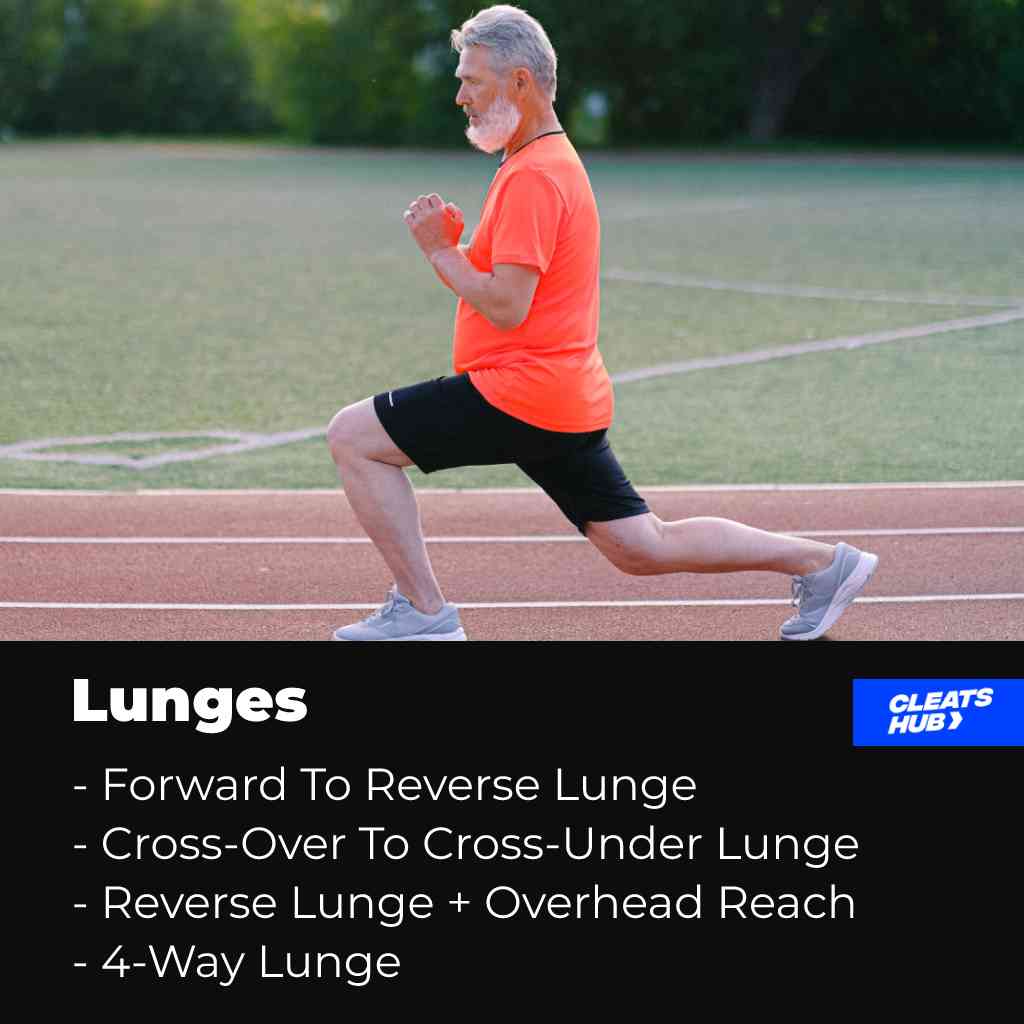
Each of the workouts in this section can be done in four sets comprising 10-15 reps per set. After each set, a 20-second break should be taken.
Forward To Reverse Lunge (Left And Right)
Forward-to-reverse lunges are an excellent example of lower-body workouts for balance and to help build strength in your legs and thighs. It also enhances mobility in the hip region, giving you better and faster strides on the ice.
How To Perform A Forward To Reverse Lunge
- To do a forward-to-reverse lounge, start by standing upright with your legs slightly apart.
- Place your hands on your waist
- Select a leg that will be fixed in a position during the exercise. If you perform a forward-to-reverse lunge (left), your left leg will be fixed to a spot while the other leg moves. The reverse goes for a forward-to-reverse (right).
- Next, move your other leg (in this case, your right leg) forward as if taking a big step and lean forward until your left knee almost touches the floor.
- Carry your body up and move the same leg (right leg) all the way back to rest on your toes until your right knee almost touches the floor. Note that during this motion, your left leg will be the one to carry all your weight.
- After performing a few reps switch your fixed leg to your right leg and move your left leg backwards and forwards like in the previous motion. Note that the leg you start with does not matter. However, ensure you perform the same amount of reps on both legs. Now to the next of our lower-body workouts.
Click here to watch the video.
Cross-Over To Cross-Under Lunge (Left & Right)
The cross-over to cross-under lunge mimics a skater’s movement while doing crossovers or cross-under on skates. So this helps improve your ease and speed of performing crossovers and the balance needed for them.
How To Perform A Cross-over To Cross-under Lunge
When performing this workout, there are two main positions you can face, left or right. I’ll explain how to perform it facing the right side so you can replicate it on the left-hand side.
- Start by standing with your head facing forward and your hands on your waist.
- To perform a cross-over to cross-under lunge (right), carry your left leg and cross it over your right leg at a suitable distance. Ensure it is at a convenient distance ahead of your right leg.
- Lean forward until your right leg almost touches the floor, then return your left leg to its original position.
- Next, raise your right leg and cross it under your left leg (at the back of your left leg). Lean backwards until your right knee almost touches the floor, then return to your original position. Do this for 10-15 reps before performing it on the other side.
- Switch the legs you bring forward and backwards to perform a cross-over to cross-under (left). This means your right leg will cross over your left leg and your left leg under your right leg.
Click here to watch the video.
Reverse Lunge + Overhead Reach
The reverse lunge with overhead reach is one of the efficient lower-body workouts for your core, glute, and hamstring. Not to forget that it also increase the amount of stability of the leg in front.
Combining this with an overhead reach gives you a stretch around your abs and chest.
How To Perform A Reverse Lunge + Overhead Reach
- Start by standing in an upright position with your hands by your sides.
- The next step involves two actions that will be performed simultaneously. First, take a big backward leap with one of your legs and rest on its toes. At the same time, raise your hands upwards as if reaching for something above your head until your biceps (upper arms) are on the same line as your ear. Ensure that your forward leg is firm and that you move downward until the knee of your backward leg nearly reaches the ground.
- After this, raise your leg back to its original position and bring your hands down at the same time.
- Repeat this for your other leg. Ensure that your posture (chest) does not lean forward and your head is straight. Note that when counting reps, performing this workout on both legs counts as one rep.
Click here to watch the video.
4-Way Lunge
A 4-way lunge ranks as the most difficult on this list. For a 4-way lunge, each leg will perform a lunge in all four directions before returning to the original position. When performing a 4-way lunge, one leg is taken at a time. And after completing a set with one leg, then the exercise is performed with the other leg.
How To Perform A 4-Way Lunge
- Start by standing upright. Pick a leg and perform a lunge with the leg in all directions.
- If you start with your right leg, bring it forward and bend down until your left knee is close to the floor.
- For the right-side lunge, move the same leg to the side and shift your body in the same direction until your opposite leg is stretched.
- The backward lunge will be made in the same order as the reverse lunge.
- Finally, the left-side lunge will be done in the same order as the cross-under lunge.
- Repeat this for your right leg ten times before switching to your left leg.
Click here to watch the video.
2. Squats
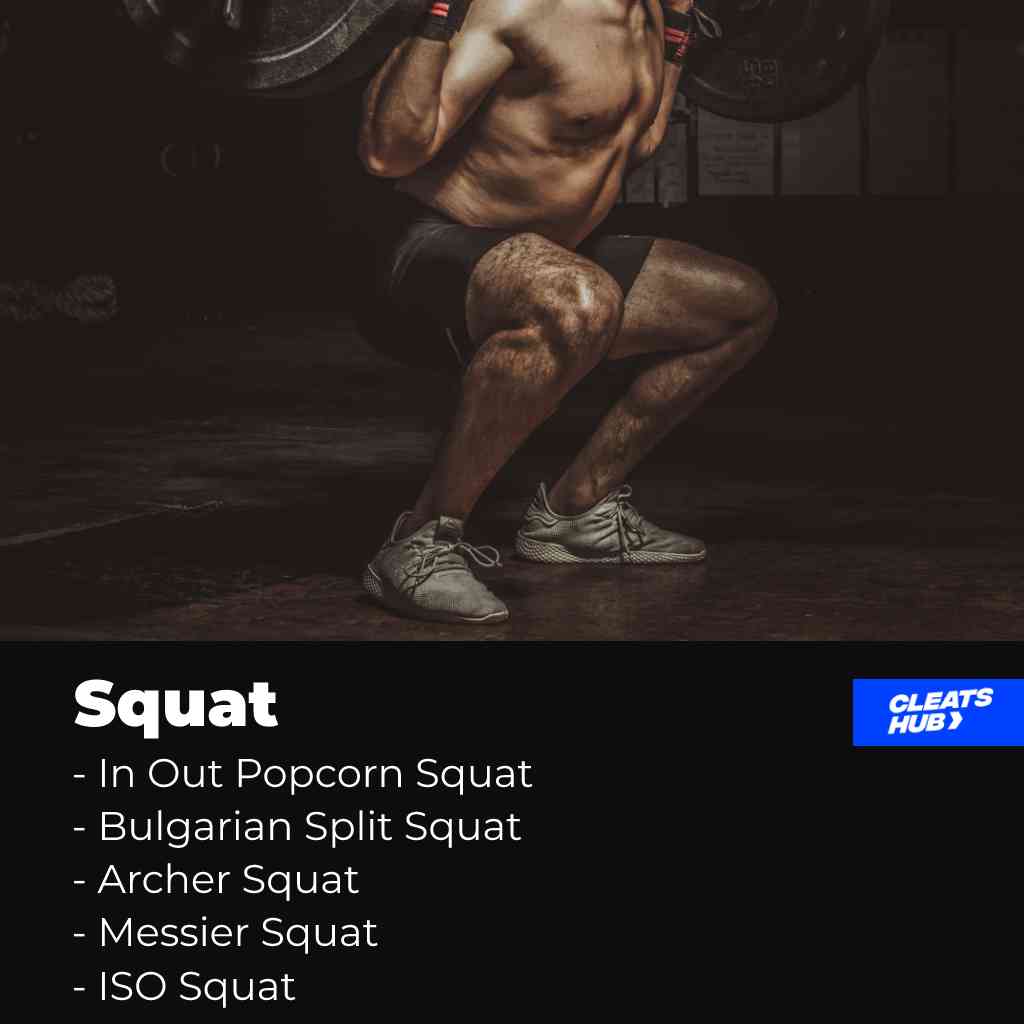
The second category of lower-body workouts is squat. In this section, there are four variations to squat exercises, with each one being slightly more complex than the other.
In Out Popcorn Squat
- Start by standing with your legs slightly apart. Then bend your knees a little so that you fall into a squat. Your knees should not be too bent; we want a good hockey stance.
- Next, bring your hands together so that your fists are close to each other in front of your and your elbows are far apart.
- To perform the in-out popcorn squat in your current position, jump a little and extend your legs so that when you land, your legs are further apart.
- Repeat the jump again, but this time bring your legs back to their original position. Ensure that each time your land, it is in your squat position. To make it difficult, you can perform the workout as fast as you can or just go for a normal pace. To calculate a set, set a timer for about 30-60 seconds before taking a 10-second rest.
Click here to watch the video.
Bulgarian Split Squat
The Bulgarian split squat is one of the better lower-body workouts for your quadriceps, glutes, hamstrings and abductor muscles. This workout also aids balance as it targets one leg at a time. This is why you must perform the same number of reps and set on both legs.
Instructions on performing a Bulgarian split squat have been discussed in another article – How To Perform A Bulgarian Split Squat.
Archer Squat
An archer squat is a semi-unilateral movement workout that focuses on the flexibility of the thigh, groins, calves and hamstrings. It also aids the mobility of the hips, ankles and legs, as well as performing a muscle stretch simultaneously.
Like other exercises, it also builds balance on one leg and should be performed on both legs for even development.
Instruction
- Start by standing in an upright position with your legs wide apart.
- Stretch your hands forward in front of you.
- Lean over to perform a squat on one leg leaving the other leg on the ground the entire time. Ensure that you squat on a leg until your thigh is on the same line as your knee. While doing this, your other leg should be diagonally stretched.
- Repeat this for a few reps on the same leg before performing the same reps on your second leg.
Messier Squats
Messier squats not only exercise the legs, but they also mimic the same motion a skater makes when performing strides. This is what makes them good lower-body workouts, especially for hockey players.
Instruction
- Take an upright position and spread your legs wide apart, ensuring they are wider than your shoulder length.
- Lift your arms so that your upper arm, elbow and lower arm make a 90-degree angle with your lower arm in front of your face.
- Bend your knees a little to perform a squat and tilt your chest slightly so that it just begins to face the ground.
- Now shift your weight from one leg to another by squatting on one leg and moving to squat on the other leg while maintaining the squatting position. The movement you make should mimic that of a hockey player sprinting across the ice in slow motion.
- Do this for about 20 reps on each leg before taking a breather.
Click here to watch the video.
Iso Squats
- Spread your legs apart and take up a squatting position.
- Ensure your chest is slightly tilted to the ground and your hip is slightly raised upward.
- Bring your hands together and interlock them right in front of your chest. Maintain this position for about 60 seconds before taking a break.
- To make it more challenging, you can go for a deeper squat or increase the time duration.
Click here to watch the video.
3. Jumps
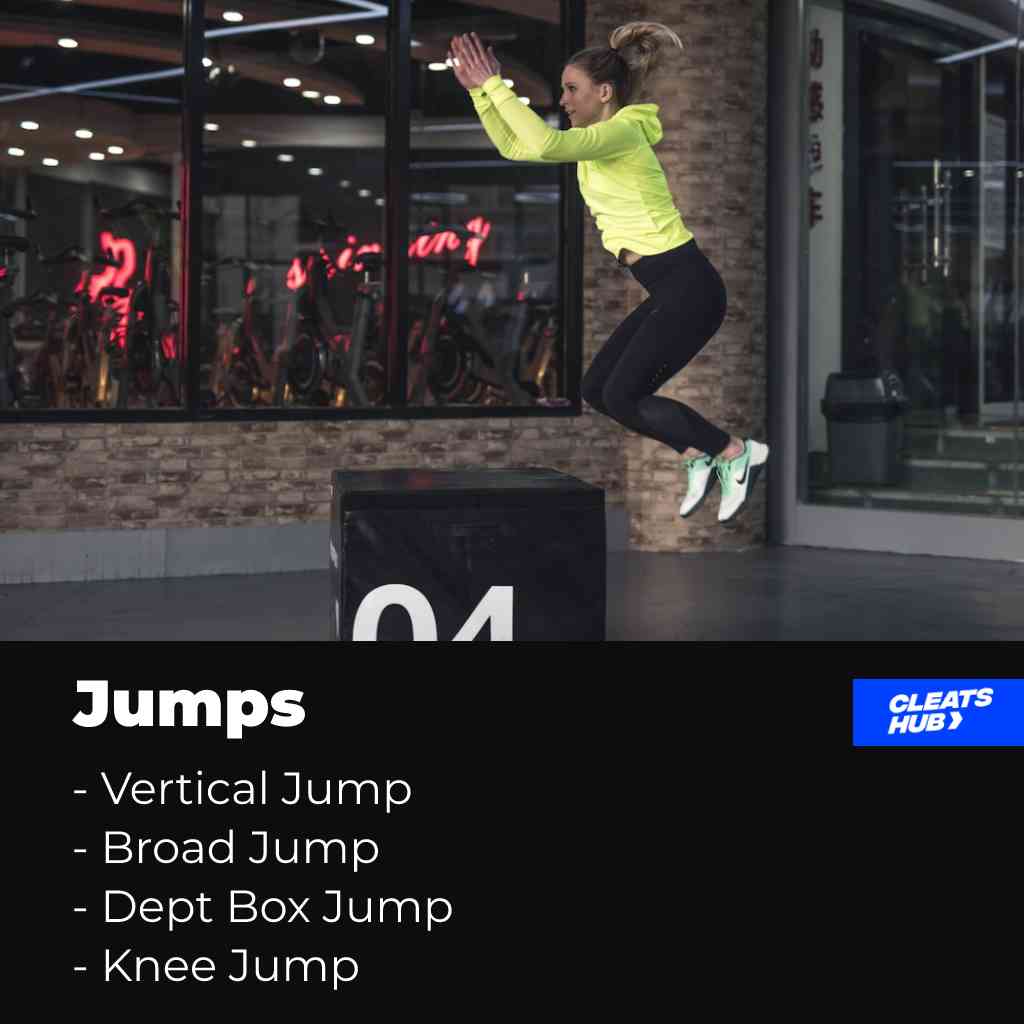
In this section, we will be looking at four jumping workouts for your lower body. They are from the easiest to execute to the most challenging. The number of reps and sets for each workout is virtually the same.
Basically, you are to perform four sets of about ten reps for each workout in this section. The number of reps can increase if you are up to it.
Vertical Jumps
Vertical jumps are a way to improve your athleticism as well as your explosive power.
To perform a vertical jump, you will begin by standing and then squatting a little to give you some momentum. After this, you will raise your body from your squat to jump as high as possible.
Apart from power, the extension of the legs and upper body stretches your body muscles. Vertical jumps can be done in four sets of ten to fifteen reps.
Broad Jump
While vertical jumps test your explosiveness on the vertical plane, broad jumps do the same but on the horizontal plane.
To perform a broad jump, you start upstanding. When you want to jump, you will bend your knee to give yourself momentum for your forward projection. Your hands are a great body part to push yourself forward by swinging them as you jump.
The purpose of broad jumps is also to measure explosiveness as well as build leg muscles. The same number of sets used in vertical jumps can be incorporated into broad jumps.
Dept Box Jump
A depth box jump is an excellent plyometric exercise that helps with the quickness and ability of the muscles to max force in a short time frame. This, in turn, enhances the leg muscles’ explosiveness when skating on the ice or chasing the puck.
How To Perform A Depth Box Jump
- Startup by getting two stools on different heights. One of them should be at knee level or slightly above, while the other should be a few centimetres from your ankle (about 20cm).
- Place the stools at a distance from each other (about 3fts).
- Climb the small stool and face the larger stool. Move one of your legs as if you are about to move down from the stool. However, before it goes down, carry the second leg and land with both legs on the floor.
- Immediately both feet touch the floor and make a jump onto the larger stool. The period from both feet on the floor to the jump should be spontaneous.
- Get down from the larger stool and move on to the small stool to repeat the process.
Click here to watch the video.
Knee Jumps
Knee jumps are the hardest jump workout on this list. They are also the top glute workout as they exercise more of the glute due to the isolation of the lower legs.
Instruction
- Start in a kneeling position. Allow your feet to rest on your toes and sit on your feet.
- To jump, swing your hands backwards and then forward as you jump to give you the needed momentum. When swinging your hands forward, swing them above your head as if reaching out for something over your head.
- After jumping, ensure you land on your feet in a squat position. You can put your hand in front of you or by your side for balance.
- To make it easier, you can place some padding under your knees to give you a little push. And that is how you perform a knee jump
Click here to watch the video.
4. Iso Skate Stride
- Start by taking a stance with your knees slightly bent.
- Stretch one of your legs backwards so that it doesn’t touch the ground but remains relatively close.
- Maintaining the squat and with your backward leg hanging in the air, move your body to mimic a hockey player taking a stride. Your entire body weight should be focused on your forward leg as your backward leg remains stretched in the air.
- After about 40 seconds, switch legs, performing the same routine on your other leg.
Click here to watch the video.
5. Deadlifts

Deadlifts are excellent lower-body workouts for your lower body as well as your hip and core. In addition, it activates your hip extensors leading to increased hip mobility and flexibility.
You can also count on core and leg development when performing deadlifts. Not to forget, it is an overall body workout and back development and strengthening exercise.
The two types of deadlifts that we’ll discuss in this section include the Conventional deadlifts and the Romanian deadlift.
Barbell Conventional Deadlifts
- To perform a conventional deadlift, you will need a barbell. Get a barbell and place it in front of you
- Bend down into a squat until you get a firm grip on the barbell
- Next, use your legs to get yourself into a standing position. It is important to know that you are not to lift the barbell with your back. Therefore your back is not to bend over toward the barbell when lifting. You are simply using your legs to get up from a squat.
Also, when you lift the barbell into a standing position, ensure your back is not tilting forward as it is to remain straight. Adding a little forward hip push is recommended. - After lifting the barbell into a standing position, go down into a squat until the barbell is as low as it can go without touching the ground. As a reminder, do not bend your back in any way, as every upward and downward movement should occur on your knee.
- Continue this for about ten reps and do a total of four sets. To increase difficulty, increase the weight of the barbell.
Click here to watch the video.
One Hane One Leg Dumbbell Romanian Deadlift
- Start by standing in an upright position with a dumbbell in just one hand
- Note the leg that is above the hand with the dumbbell and raise the hip up so that the leg does not touch the floor. Note that the leg raised must be on the same side as the hand with the dumbbell. Also, the leg must be raised, not bent, and it must be raised like the hip.
- Now that your balance is on one foot, bend your body from your waist down so that the hand with the dumbbell fall vertically down and the raised legs move backwards until your back and the leg moving backwards make a straight line.
- Then reverse the motion. Do this about ten times and change the leg on the ground as well as the hand with the dumbbell.
Click here to watch the video.
Conclusion
Finally, this brings us to the end of the top five lower-body workouts to build your lower-body muscles for better performance on the ice. Adding these lower-body workouts would be a beneficial off-ice exercise for your legs! In addition, you will also notice visible improvement in your stamina, speed and lower body strength on the ice.
Thank you for reading.
Psstt…. The Top Performing Cleats

